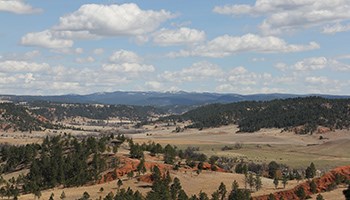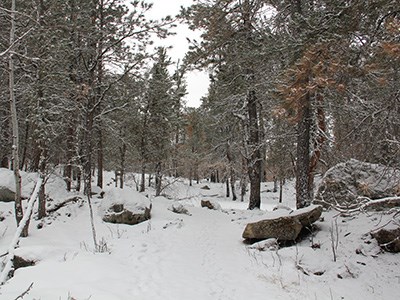
NPS / Joe Bruce The Black Hills are a forested shelter that rises up from the windy, sun-baked Great Plains. These mountains are dominated by ponderosa pine forests, speckled with a few other conifers and deciduous trees. The contrast of dark ponderosas against the lighter grasslands give the mountains their name, one derived long before English words were spoken here. Within the monument, these ponderosa pine stands make up the vast majority of forests. Small stands of oak and aspens share the hills, with tall cottonwoods, ash, and oaks growing in the floodplains. The forests provide critical habitat for other plants and numerous animals. Healthy ponderosa pine forests have a mix of mature trees, younger saplings, and dead snags. The trees thrive with more space, and generally do not grow very close together. Fire is a critical component of ponderosa pine ecosystems; today, the park uses prescribed burning to mimic the benefits of natural wildfire. 
NPS / Katie Karnes These living sentinels bear witness to the passing seasons. Through heat and drought they patiently wait for the rain to fall. Under the biting cold of winter snows they stand ready for the spring thaw. Swaying gently in the stiff winds coming off the prairie, the forest offers us a chance to reflect on the cyclic nature of life and the wonderous bounty of nature. |
Last updated: August 25, 2019
